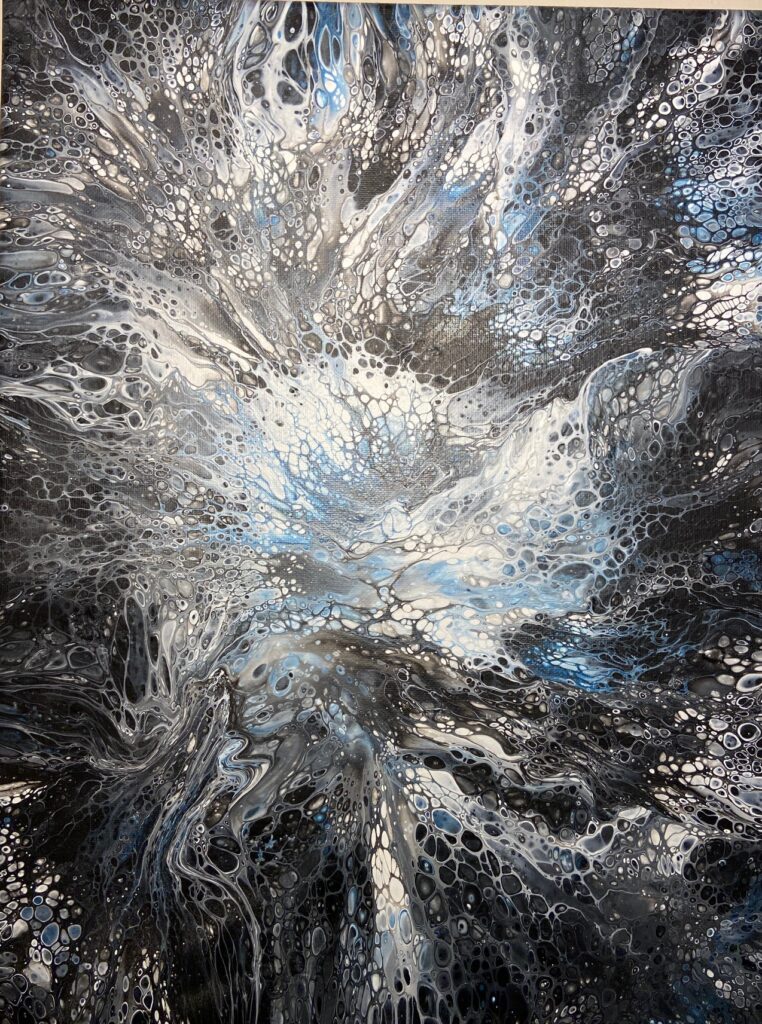About Digicrylics Art
I created the name “Digicrylics” because this made-up word (also my trademark) captures my process of creating art that starts with Acrylic Paintings.
[The art I create falls into two separate types: The art discussed on this page, Digicrylics, and the art found in my book, Life After Leaf. In a separate part of this website I have described how I create my art based on my portraits of dead trees (the art found in my 2022 book, Life After Leaf.]
Have you ever made acrylic pour paintings, perhaps as a child? I have and it’s a lot of fun. With very little training, you can make beautiful creations like this:
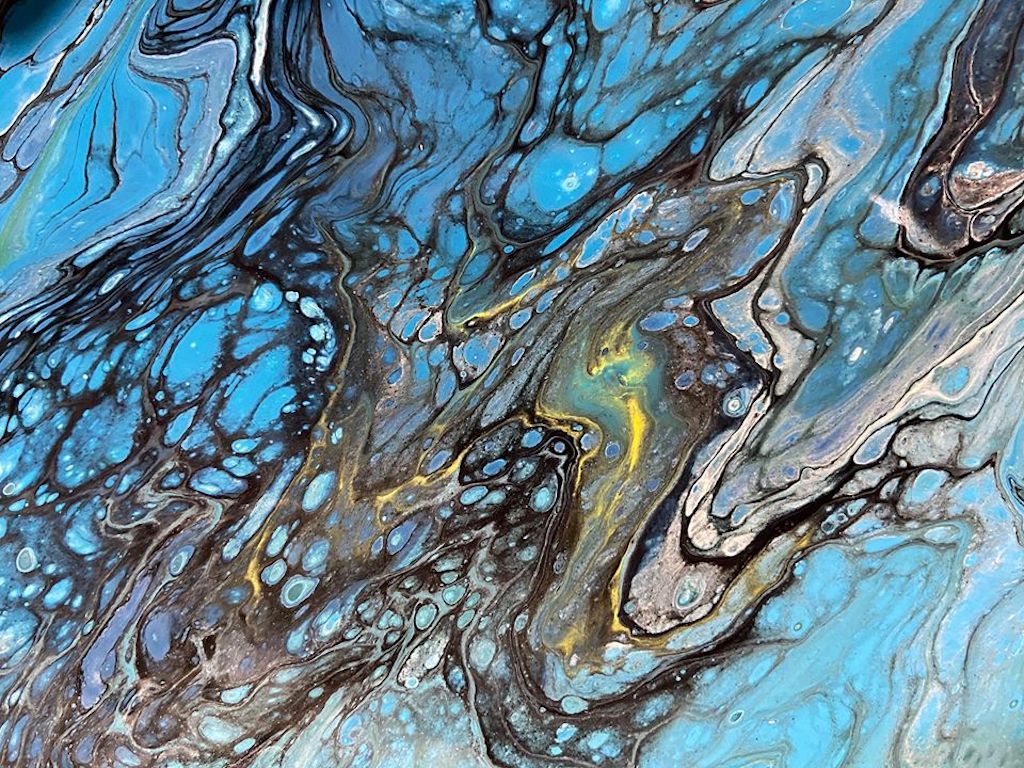
and this:
If you haven’t played with acrylic paint to create pourings like these, you should consider doing it. There are many websites and videos online that will give you ideas about how create these painting.
A few years ago, I pushed that fun beginning to new levels. I experimented extensively with the paint, testing various dilutions and additives. I started moving and mixing the paint by using many techniques, including tilting the canvass. There were many failures, but once in a while something interesting emerged from a paint.Sometimes I notice “things” emerging from the paint. Gravity and air took the form of “things” on the canvass. In the first state, I started thinking of myself as an “ontologist.” This reminds me of looking for “things” in the clouds. When that happens, I photograph those shapes, experimenting with various photographic techniques.
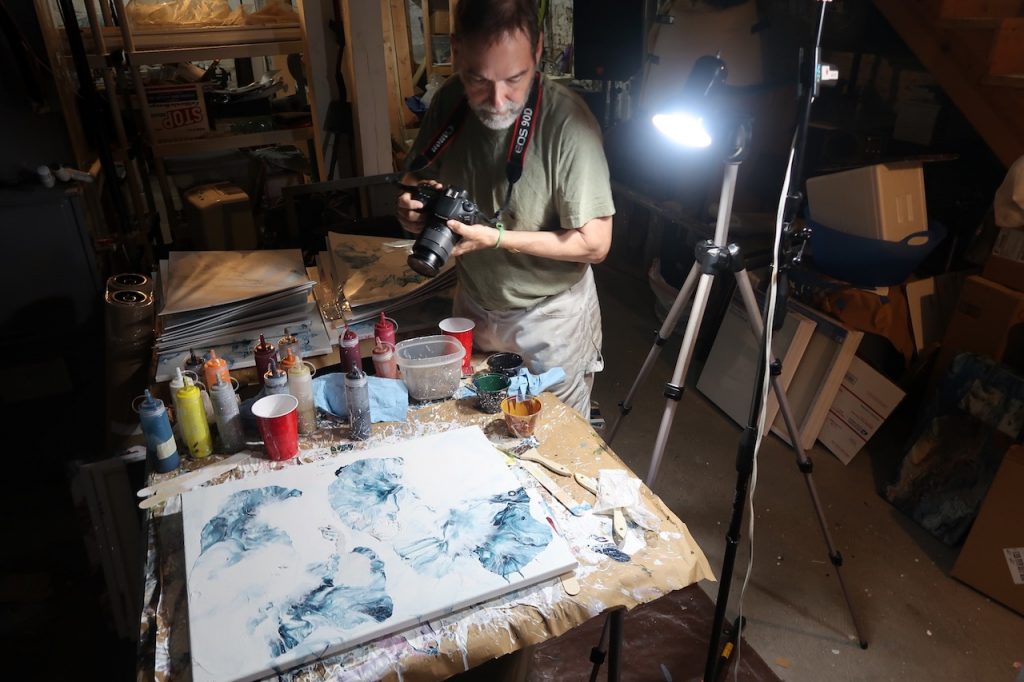
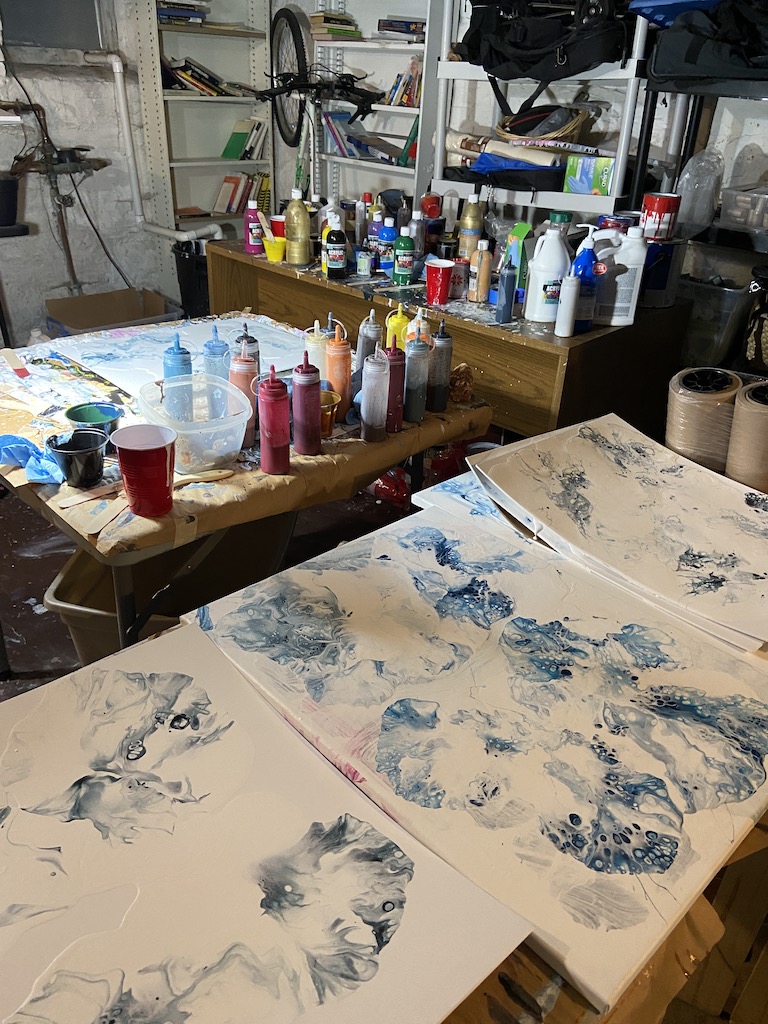
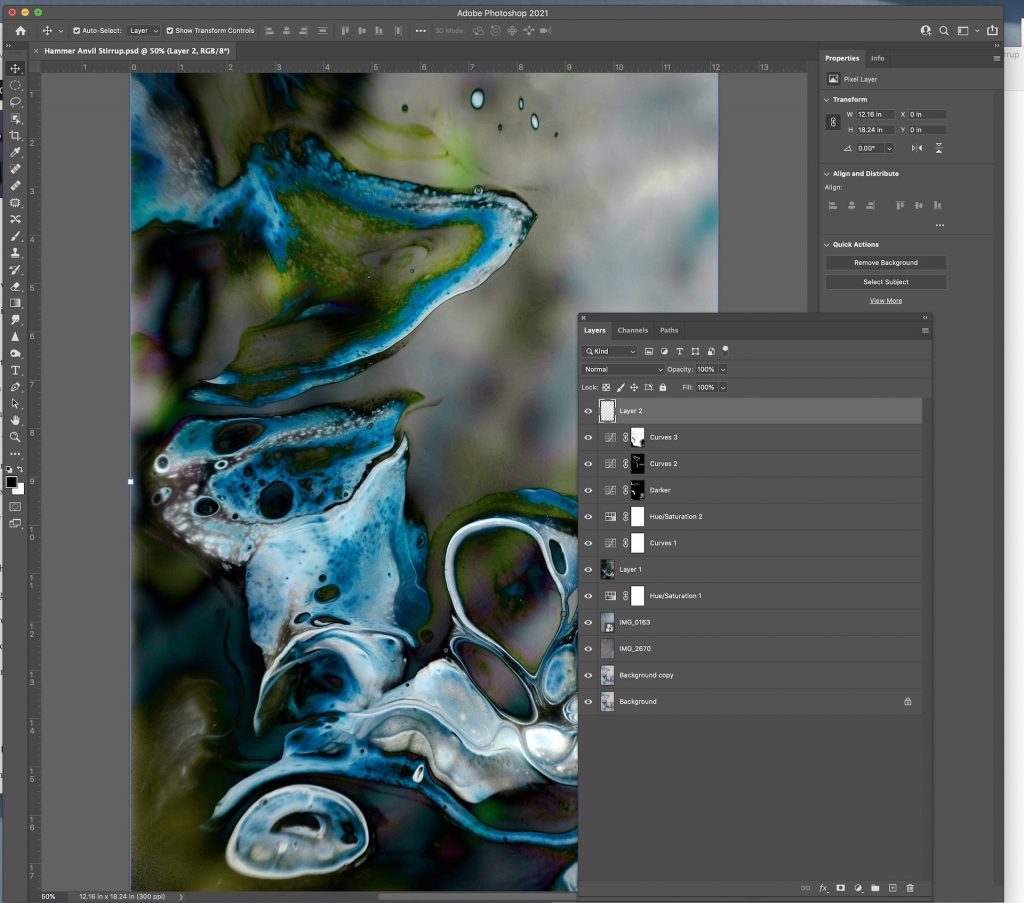
Again, there are many failures, but my photography images that “work” make it to the Photoshop stage of the process. Once my digital photo resides in Photoshop, I do many more experiments involving composition, coloration, using adjustment layers and blending layers, stirring in countless texture images, photos I have taken in the outside world. These texture photos can be almost anything from textiles, stone, wood, plants, animal fur, and seashells. The final products, which started with a photo of a paint splotch, can involve anywhere from 10 to 50 Photoshop layers before getting the final digital image.
Once in a while, one of my experiments turns into something that keeps my attention. I’m sharing many of these “successes” with you on this website. The images on this site fascinate me for many reasons. The images that “work” have an organic 3-D quality to them. I enjoy the gradients, fractals and fragmentations. In Photoshop, the acrylic paint can sometimes be coaxed into looking like metal, wood, plants, glass, water, marble, flower petals, clouds, porcelain, fabric, fire and even bone. When these images “work,” they would have been very difficult (maybe impossible) to create completely by hand (though I often do some work on these images by hand).
I am tempted to call this project “Rorschach Art” because so many people say things like “This looks like a [fill in the blank].” Many people see faces or animals in the final works. Sometimes I think of these images as “eye candy.” My eyes sometimes wander about these images, exploring how the “things” in the image dissolve into mist or fluid. This art begs you to bring yourself half-way to the images in order to complete them.
Erich Vieth
erichvieth@gmail.com
My Other Websites:
Photography: erichvieth.com
Blog: www.dangerousintersection.org
Attorney (Profession): erichviethattorney.com
Copyright © 2022 by Erich Vieth. All rights reserved.
The materials on this website, or any parts or portions thereof, may not be reproduced in any form, written or mechanical, or be programmed into any electronic storage or retrieval system, without the express written permission of Erich Vieth, unless such copying is expressly permitted by federal copyright law. Please direct inquiries and permission requests to Erich Vieth: lifeafterleaf@gmail.com .

